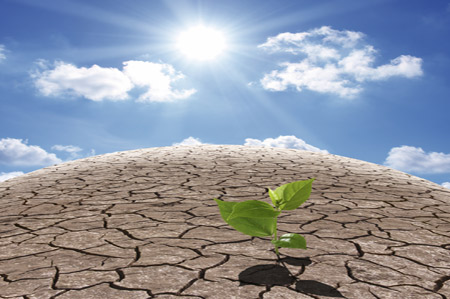 (Bloomberg) – Rice, soybean and corn crops in India urgently need rainfall as the strongest El Nino in almost two-decades parches vast tracts of farm land.
(Bloomberg) – Rice, soybean and corn crops in India urgently need rainfall as the strongest El Nino in almost two-decades parches vast tracts of farm land.
Parts of the southern, central and western regions are facing moisture stress and need widespread rains in the next two weeks to salvage crops, according to J.S. Sandhu, a deputy director general at the state-run Indian Council of Agricultural Research in New Delhi. That may prove elusive as the monsoon begins to retreat from the north of the country this week, according to the state forecaster.
El Nino is changing weather across the globe, baking parts of Asia and bringing torrential rains to parts of South America. That may disrupt harvests and supply of rice from the Philippines to India. Prime Minister Narendra Modi is counting on a bumper harvest to curb retail inflation and pave the way for the fourth interest rate cut this year to accelerate economic growth.
“Domestic food inflation overall will rise as there will be upward pressure on food prices because of lower rainfall,” Faiyaz Hudani, associate vice president at Kotak Commodity Services Pvt., said from Mumbai on Sept. 2.
“The only thing that’s good for India now is the declining global prices of commodities, especially edible oils and the whole oilseeds complex.”
Palm Oil
India is poised to import record amounts of palm oil after prices in Kuala Lumpur plunged to a six-year low last month and as a domestic cooking oil shortage widens. Food costs tracked by the United Nations fell for a ninth month in July, the longest slump in more than a decade.
“There’s an overall rainfall deficit in the oilseed growing belt and that will definitely have an impact on the yields,” said B.V. Mehta, executive director of Solvent Extractors’ Association of India. “There will be increase in imports. Fortunately for India, international prices are low.”
Monsoon rainfall, which waters more than half India’s 145 million hectares (360 million acres) of crop land, was below the 50-year average in July and August, and September will be not be any better, according to the India Meteorological Department. Downpour since the start of monsoon on June 1 are 12 percent below the average, department data show.
Reservoir Levels
El Nino this year is the strongest since 1997-98, according Australia’s Bureau of Meteorology. The below-par performance of the monsoon also imperils the outlook of winter crops including wheat, which are mostly irrigated. The water levels at India’s 91 main reservoirs is 58 percent of the capacity as of Aug. 27, less than the 88 percent average of the last 10 years, official data show.
While the area under monsoon crops is little changed this year at 96.8 million hectares, rice, soybeans and pulses in some areas are at risk from a prolonged dry spell, Kotak’s Hudani said. India is the world’s top buyer of lentils and imports may reach a record 4.5 million tons in 2015-16, according to the India Pulses and Grains Association.
“Pulses are one of the concerns as availability is limited and at the same time rainfall has been lower,” Hudani said. “It’s better to have chicken instead of pulses, which is used to be poor man’s protein.”




